Invisible Death Maneuver: Rapidly Deployable Minefields
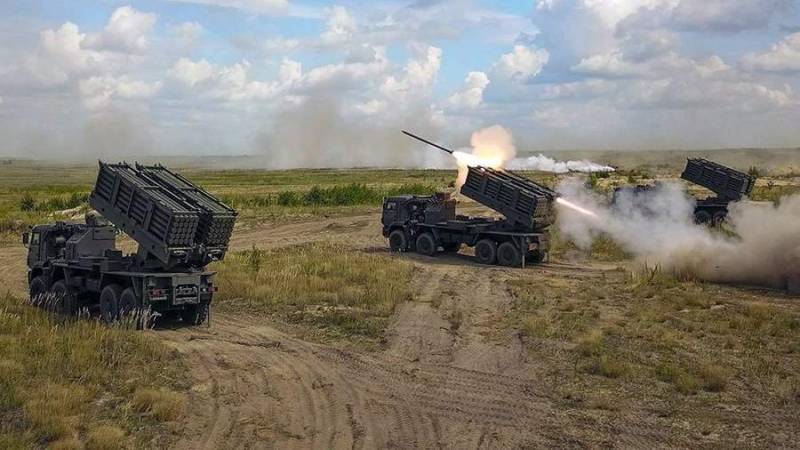
“Do you want to be the forefront of this square nest!” (specific humor from the times of the USSR)
As has been repeatedly noted in various sources, the nature of the military conflict in Ukraine is more reminiscent of positional battles during the First World War than the much more maneuverable combat operations of the Second World War and subsequent conflicts. There are many reasons why this happens, but we won’t go into that here now.
It is vitally important for the Armed Forces of Ukraine (AFU) to break through the defensive positions of the Armed Forces of the Russian Federation (RF Armed Forces) and introduce into battle maneuverable units capable of developing success. In turn, the RF Armed Forces time after time thwart the attempts of the Ukrainian Armed Forces to break through the defense line, and in some sectors of the front they themselves try to carry out an offensive. In fact, we have an extended front line on which the Russian Armed Forces and the Ukrainian Armed Forces are trying to push through each other’s positions.
To disrupt the enemy's offensive, the Russian Armed Forces use various means. Enemy armored vehicles are effectively destroyed combat helicopters и unmanned aerial vehicles (UAVs). Works against enemy infantry artillery and multiple launch rocket systems (MLRS).
Another important means of preventing the enemy’s offensive is minefields.
Many remember tank battle near Novoadarovka, when one Russian tank fought against two enemy tanks and six armored vehicles. It is safe to say that the mines installed by the engineering units of the Russian Armed Forces had a significant impact on the course of this battle. They constrained the enemy's actions, forced him to advance slowly and in a column, and ensured the defeat of several armored vehicles.

The presence of minefields hampered the actions of enemy armored vehicles and manpower near Novoadarovka
In general, it is quite difficult to overestimate the role of minefields in this war, given that the actions of engineering units most often remain behind the scenes - there are no low-level flights, nose-up missile launches, or rapid tank attacks and spectacular explosions of volumetric detonating ammunition.
Most of the mines in the Russian Special Military Operation (SVO) zone in Ukraine are installed the old fashioned way - manually, but there are also many special systems for remote laying of minefields using various delivery methods.
Aviation, mortars, artillery
Mines can be dropped from airplanes and helicopters, but to do this they must fly over the mined area, exposing themselves to the risk of enemy fire.

Helicopter mining system VSM-1
Most of the ground-based remote mining equipment is designed to throw mines at a distance of no more than a few hundred meters, which, given the oversaturation of the modern battlefield with UAVs for various purposes, is fraught with their rapid destruction by the enemy. Structurally, such remote mining devices are usually multi-barrel mortar-type systems.
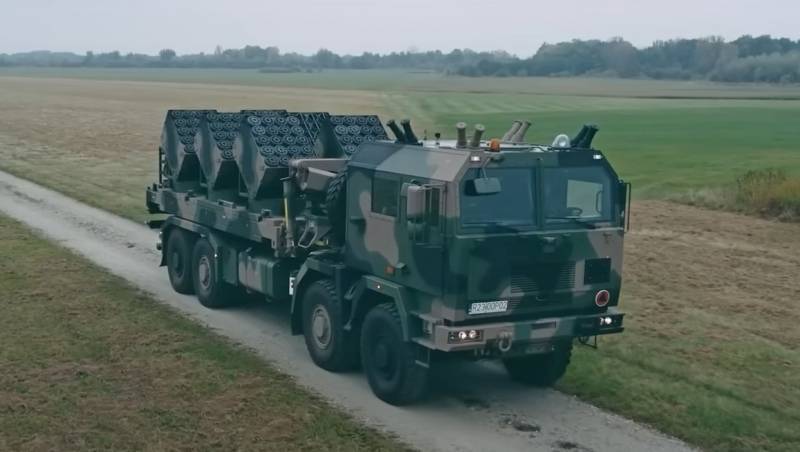
The Polish Baobab-K remote mining system throws mines at a range of only about 100 meters
However, there are means of remote mining that provide a significantly greater mine-laying range.
In particular, the US Armed Forces use the RAAMS artillery remote mining system, which includes M718 and M741 cluster shells, containing nine M70 and M73 anti-tank anti-bottom mines each, as well as the ADAM artillery remote mining system, including M692 and M731 cluster shells, containing 36 "jumping" mines. » anti-personnel fragmentation mines M67 and M72, respectively. The range of mines thrown by the above-mentioned systems reaches 18 kilometers.

Artillery shell M741 caliber 155 mm
As of February 2023, the United States supplied Ukraine with over 10 RAAMS shells capable of deploying over 000 (!) anti-tank mines.
The disadvantage of artillery systems for remote mining is presumably the significant time it takes to cover the required area with mines, during which artillery installations can be detected and destroyed by counter-battery warfare.
MLRS
The FRG previously was armed with a 36-barrel MLRS "Lars-2" of 110 mm caliber, the ammunition of which included rockets with cluster warheads, the "filling" of which was AT-2 anti-tank mines. In 18 seconds, the Lars-2 MLRS could mine an area of 400x300 meters at a range of up to 14,7 kilometers. This system has now been withdrawn from service.
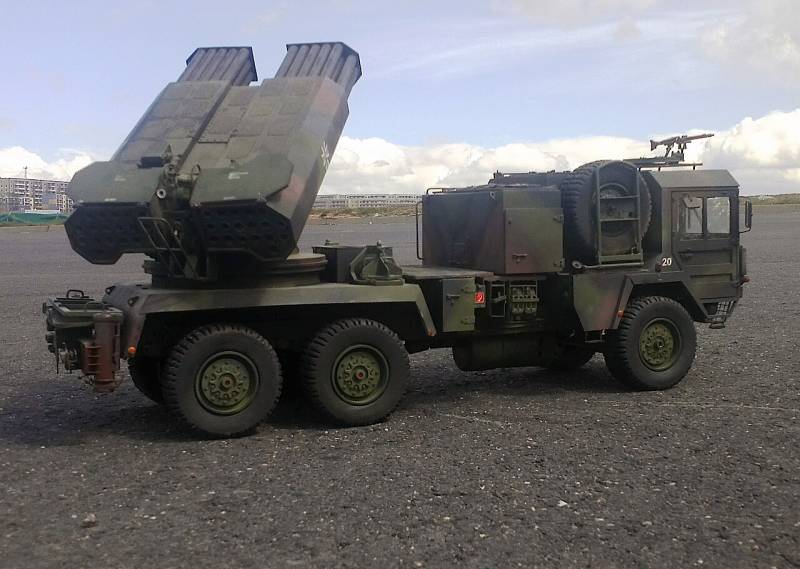
MLRS "Lars-2"
At the same time, there are rockets with cluster warheads equipped with 28 AT-2 anti-tank mines for modern American MLRS and HIMARS MLRS. Thus, one MLRS MLRS in 60 seconds is capable of throwing 336 AT-2 anti-tank mines at a distance of up to 40 kilometers, mining an area of 1x000 meters. Accordingly, the HIMARS MLRS supplied to Ukraine should be capable of throwing 400 AT-168 mines in approximately 2 seconds.
Germany alone transferred 500 AT-2 missiles for HIMARS, MLRS and MARS II MLRS to Ukraine - that’s 14 anti-tank mines.
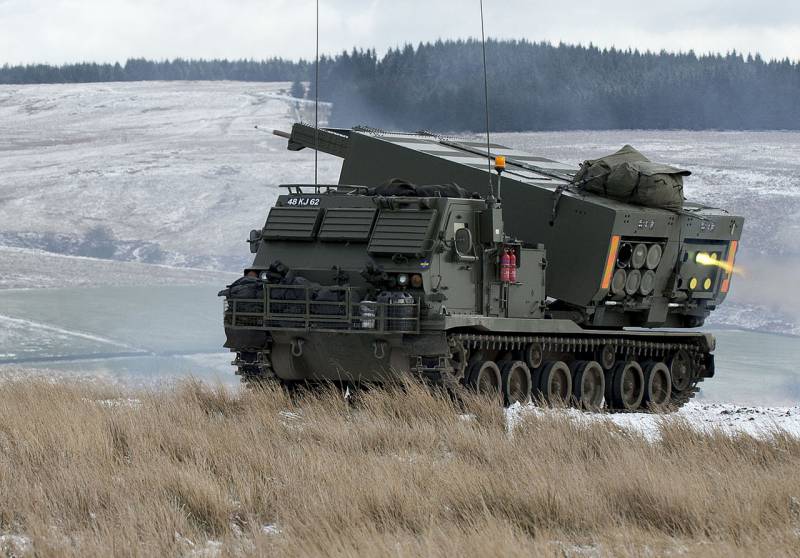
MLRS MLRS
The ammunition load of Soviet and now Russian MLRS such as “Grad”, “Uragan” and “Smerch” also includes rockets designed for remote mining of terrain. In particular, the 9M55K4 missile contains 25 PTM-3 anti-tank mines with an electronic proximity fuse, which makes it possible to lay up to 300 anti-tank mines in one salvo at a range of up to 70 kilometers.
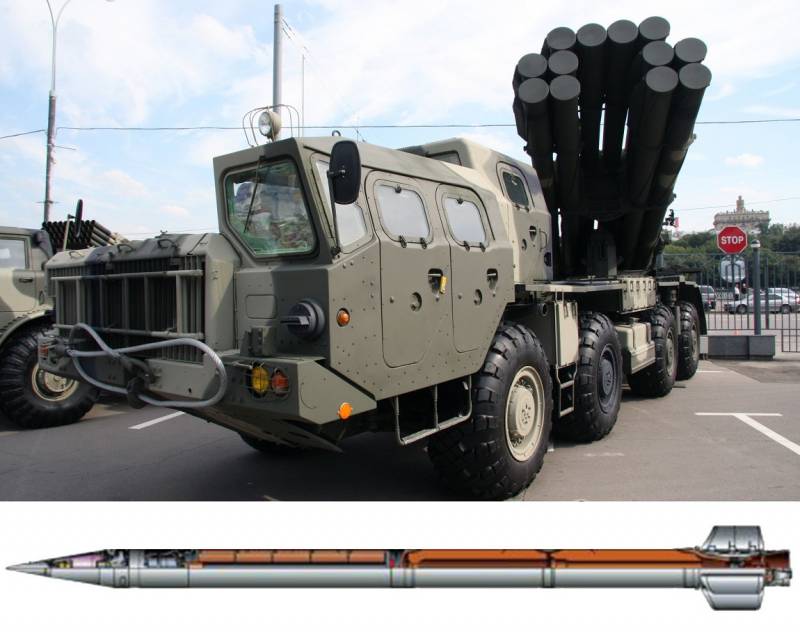
MLRS "Smerch" and 9M55K4 rocket
Based on open data, we can conclude that ammunition for MLRS intended for remote mining did not become particularly widespread either in the USSR Armed Forces or in the RF Armed Forces - apparently, all other things being equal, the Armed Forces gave priority to “classic” fragmentation shells - high-explosive action, designed to strike the enemy. Perhaps there are certain reasons for this - some sources contain information about the insufficient accuracy and accuracy of laying minefields when using standard MLRS.
In Russia, a specialized machine was created for the engineering troops - the engineering system for remote mining (ISDM) “Agriculture”.
"Agriculture"
ISDM “Agriculture” was developed by the Tula enterprise of JSC NPO SPLAV named after. A. N. Ganichev." It includes two packages of 25 barrels of 122 mm caliber each (according to some sources, 140 mm), that is, a total of 50 barrels. Ammunition packages can be changed entirely. The equipment of the package can be combined at the discretion of engineering troops with anti-tank mines, anti-personnel mines and their combinations. The deployment range of minefields at the ISDM “Agriculture” reaches 15 kilometers.

ISDM "Agriculture"
It is assumed that the “Agriculture” ISDM can form highly complex minefields, with passages for its troops, and automatically mark their location on a digital map of the area.
It is possible that the ISDM “Agriculture” is currently the most effective remote mining system in the world, combining a long range with high efficiency in laying minefields.
Conclusions
In conditions of positional battles in the Northern Military District zone in Ukraine, when the enemy is actively trying to go on the offensive, remote mining systems can become, and most likely are, one of the most effective ways to disrupt an offensive.
Let’s say the enemy has suppressed our artillery and MLRS firing positions, and quickly shoots down and crushes us with electronic warfare (EW) means. drones, concentrated air defense (air defense) assets and, pushing back the boundaries of the operation of our planes and helicopters, his artillery is conducting barrage fire on our forward positions.
All this allows the enemy to organize the work of sappers and ensure the clearance of the area, as a result of which he expects to introduce maneuver groups in tanks and other armored vehicles into the breakthrough.
Under these conditions, the “Agriculture” ISDM can quickly neutralize all the enemy’s successes, once again ensuring the deployment of minefields in a matter of minutes.
A more flexible scenario may also be considered.
When the enemy is confident of success and brings his main forces into battle, remote mine-laying is carried out, both from the direction of the enemy’s advance and in the direction of his possible withdrawal/retreat. As a result, a cauldron is formed, the basis of which will be minefields. The enemy will not be able to bring reinforcements into battle, organize the supply of ammunition and fuel, or ensure the evacuation of damaged equipment and the wounded. Retreat will also become impossible, the only option left will be surrender or death.
The basis of such a cauldron can be precisely the ISDM “Agriculture”, of course, with the support of other means of armed struggle.
The range of laying minefields up to 15 kilometers allows the "Agriculture" ISDM to set up mine ambushes in the enemy's near rear, reducing the efficiency of supplying his forward positions, ensuring the disabling of enemy equipment and manpower.
It can be assumed that the experience of the SVO will allow us to take a fresh look at the use of engineering systems for remote mining during modern high-intensity combat operations.
Information